Your pet’s safe trip
to or from the United Kingdom starts here
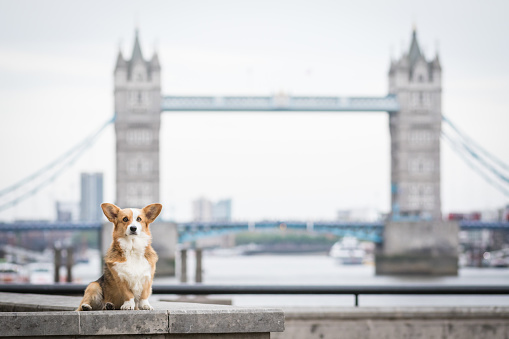
We’re
Different
Pets, not packages. Expect more.
We’re proud to be the highest rated and most trusted international pet shipping company in the United States, transporting more pets to the UK than any other company.
50+ years of care
Trust the experts with experience (and all the 5-star reviews to prove it!).
Click to view >
Technology
Industry-leading Pet Travel Portal to make things simple & clear.
Click to view >
Pet Protection Plan
Peace of mind for things outside of your (or our) control.
Click to view >
Stay in touch
CareTags Travel Sense to provide updates throughout your pet’s move via email & text.
Click to view >
Partner with us for peace of mind.
Every trip has a story
Read stories traveling to and from the United Kingdom
March 12, 2025
Benji is glad to be home in England
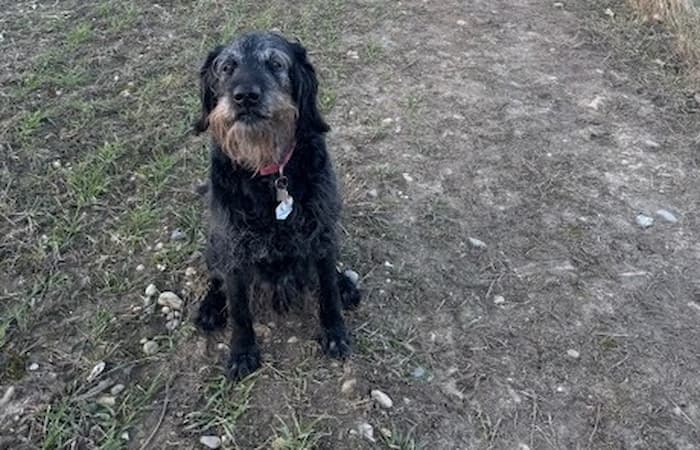
October 28, 2024
Do dogs get jetlag?
William wasn’t too sure about trading the sunshine of Orlando for the cloudy charm of London, but thanks to a smooth trip with British Airways and the expert coordination of Rosemary, everything went off without a hitch. His person, Keith,...
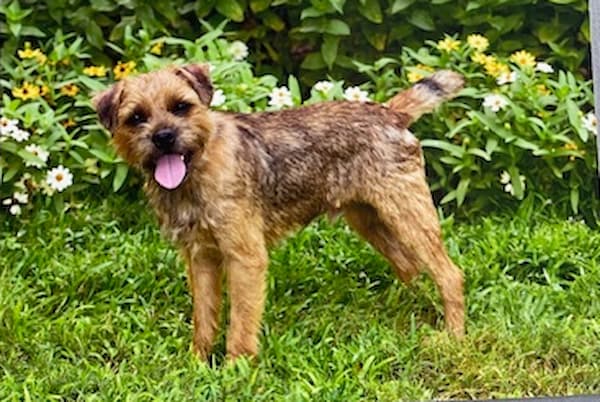
April 02, 2025
Pippa moves to Cambridge, England
Pippa, a sweet white Labradoodle from Connecticut, recently made the transatlantic leap to her new home in England. Known for her gentle spirit and fluffy charm, Pippa can get a little anxious when she's apart from her family—often letting out...
.jpg)
April 28, 2025
Orion's Big Move: From the Mountains to English Gardens
Orion, an affectionate and friendly young cat with a playful, cheeky streak, recently made the journey from the mountains of Colorado to his new home in England. Traveling comfortably aboard Lufthansa on a carefully planned route from Denver to Frankfurt,...
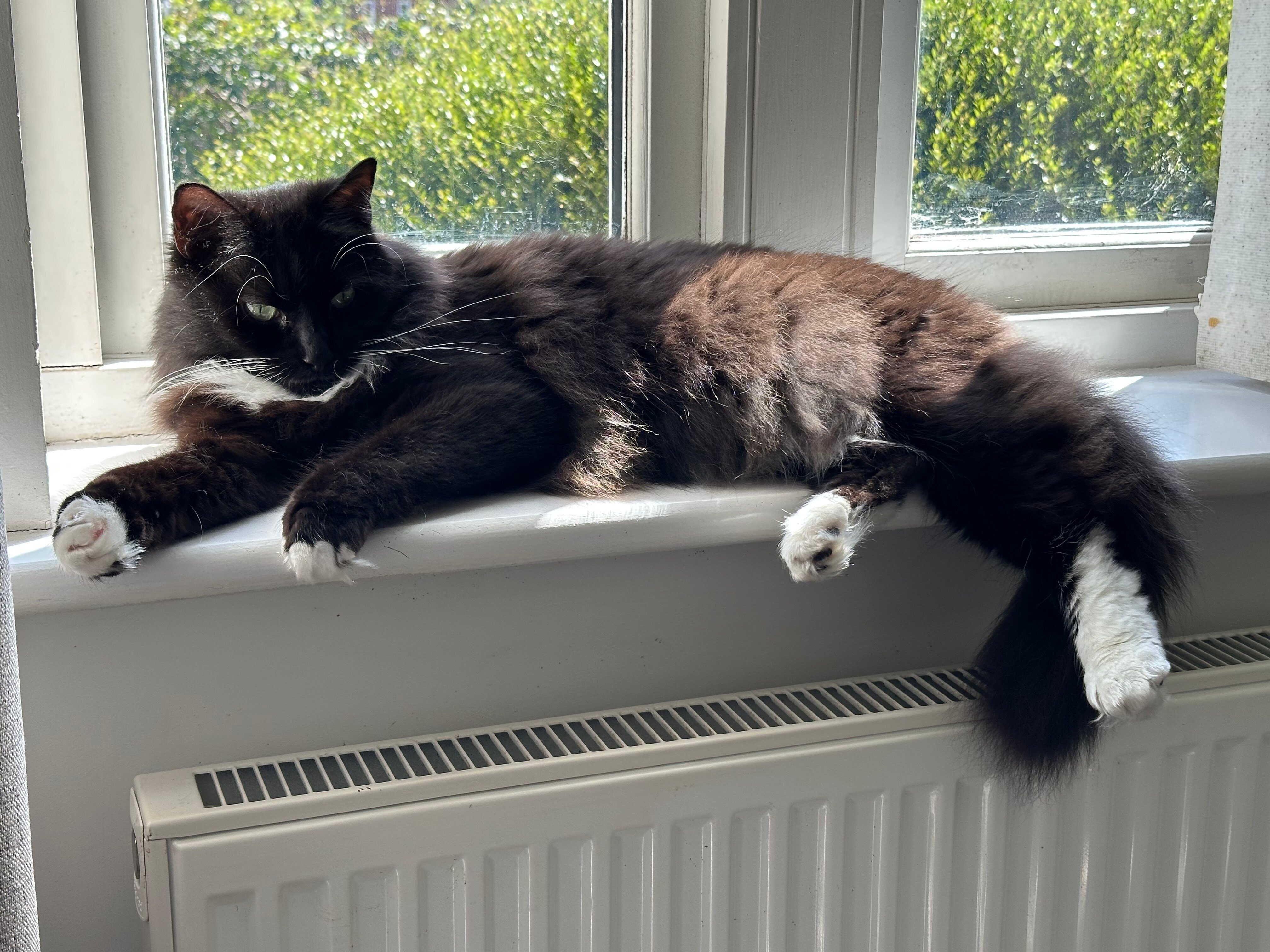
May 27, 2025
Four Cats, One Big Leap
Moving four cats from the U.S. to the U.K. might sound like a recipe for chaos, and, well… it kind of was—but it was also a beautiful story of resilience, adjustment, and the joy of reunion.
Each...

June 25, 2025
Fizzgig's Flight Across the Pond
With a name like Fizzgig, you might expect drama, mischief, or at the very least, a puff of fire and flair. Inspired by the fuzzy, wide-mouthed creature from The Dark Crystal, this 13-pound Maine...
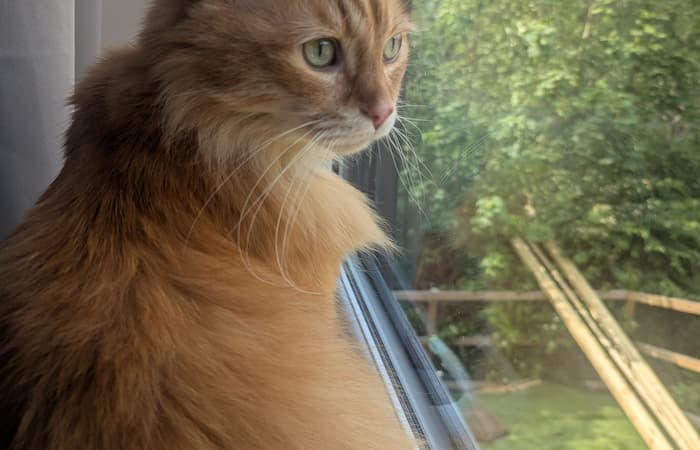
August 04, 2025
Harry & Ruby's Transatlantic Tale
Harry and Ruby, two warm and friendly felines from Raleigh, North Carolina, recently embarked on the biggest adventure of their lives: a move across the Atlantic to their new home in London, England.
As anyone who knows...
.jpg)
October 14, 2025
Ziggy and Friday's Trip to the United Kingdom
Their zest for life is unmistakable. These two cats find joy in every corner, every sunbeam, and every rustle that hints at play. When their owner arrived at the ARC at Heathrow to pick them up, the reunion...
.webp)
May 06, 2025
Boston to Burgundy
Meet Hallee—an energetic Irish Doodle with the heart of an explorer and the loyalty of a lifelong best friend. A mix of Irish Setter and toy poodle, Hallee has always been full of energy and curiosity. As she nears her...
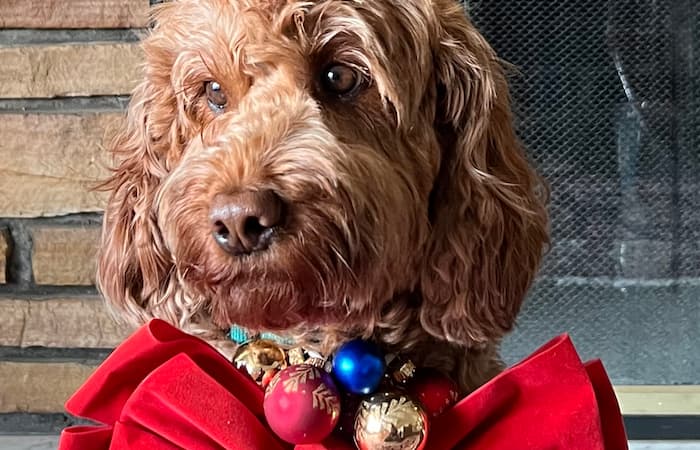
March 17, 2025
From Chicago to Melbourne: Macey's Journey Home
After several years in the U.S., Macey—the sweet, slightly shy ball-chaser—has made her way back home to Australia. Her journey from Chicago to Melbourne was no small feat, spanning thousands of miles and involving a carefully coordinated trip with our...
.jpg)
See what our customers
to the United Kingdom
are saying
313 days ago
Incredible experience using this service. Everything was truly 'hands free' as Starwood took care of all the heavy lifting. Each point of contact was detailed, communicative, and readily available for any and all questions. Our dog arrived to her final...
Source: Google
232 days ago
I have hired Starwood twice to transport my two dogs from London back to the US. The team is amazing and I highly recommend working with them if you want a stress-free experience.
Source: Google
412 days ago
My partner and I hired Starwood to help with transporting our dog from Texas to the UK. We found it as affordable as transporting a pet can be (as it was thousands of dollars more to do ourselves and a...
Source: Google
254 days ago
Moving cats to another country is incredibly stressful and Starwood talked me through every step of the process, co-ordinated with our vet, and gave us updates during our cats' journey. There is a lot of documentation and Starwood ensured everything...
Source: Google
250 days ago
My two dogs travelled from LA to the UK and Starwood made it all so very easy for us. We were kept well informed and given lots of advice and assurance. They arrived safe and well and so much happier...
Source: Google
261 days ago
Starwood, especially Rosemary, was very reliable, knowledgable and helpful. Always positive and brimming with confidence in the whole event (which was scary for me as such an ordeal for the pups).
All went well in the end of course and we...
Source: Google
284 days ago
Fabulous experience with Starwood! I relocated to the UK for work, and when I started researching how to get my two cats sent over with me, I immediately became overwhelmed. There’s tons of nuances to the paperwork, and a lot...
Source: Google
285 days ago
Very good service from this company who organised the safe transport of our 12 year old dog from Los Angeles to London. It's a complicated process but they guide you through it with a useful client portal with tasks laid...
Source: Google
280 days ago
We can't be more appreciative for the support Starwood provided to us for our beagle's successful relocation from the US west coast to the UK - and we are especially grateful to Sarah W as our pet travel coordinator.
We have...
Source: Google
318 days ago
Starwood were absolutely amazing from start to finish. Moving countries is always a stressful period and they took all of the stress out of handling the pet side of things. I couldn't recommend them highly enough.
Source: Google
342 days ago
Starwood Pet Travel guided through all the paperwork and during the travel, they took excellent care of my cat and dog. I was expecting them to be traumatized, but after resting 24 hrs, they were back to their joyous selves....
Source: Google
388 days ago
Starwood took wonderful care of us and our dog. They made this move so much easier - and she arrived safetly in the UK. I highly recommend them!
Source: Google
395 days ago
We had a very small window to get William scheduled to fly back from Florida to the UK .Starwood kept us in the picture all the way through the process by Phone -- text and email .One tiny hiccough on...
Source: Google
198 days ago
MIND-BLOWING SERVICE! Rosie and the team were amazing. She tirelessly went over all the documentation several times with me as I was very nervous. We had to change vets due to a prior short-term move from Minneapolis to Richmond just...
Source: Google
191 days ago
We had an excellent experience with Starwood Pet Travel! Rosie and the Starwood team were absolutely fantastic — Rosie explained the entire process thoroughly and helped ease our worries about what to expect. Thanks to her and the team involved...
Source: Google
192 days ago
Very good experience with Sarah from Starwood moving our cats from the US to the UK. Everything went very smoothly.
Source: Google
182 days ago
We recommend Starwood 100%. Moving our pups was the most stressful and complicated part of our move to Europe, so we wanted to make sure to use a service who could take care of everything. Rosie was responsive and proactive...
Source: Google
178 days ago
Sarah was phenomenal in guiding my family through the process of getting our two dogs to our destination. I was always informed of each stage from pickup, vet appointments, transport, and delivery. I recommend Starwood and I will be using...
Source: Google
167 days ago
Cassidy was brilliant in organising my dogs travel home. The fight was cancelled at no fault of Starwood and they managed to get them on a flight a day later at no extra cost to us! The route worked out...
Source: Google
167 days ago
Starwood pet travel provided an excellent and comprehensive service to transport my 2 cats from Orlando to London Gatwick. I’m not sure I could have pulled it off without them! The cats settled in soon after their arrival and everything...
Source: Google
165 days ago
Starwood's service was worth every penny for peace of mind. They took care of everything in sending my 2 cats from the US to UK. They knew what paperwork was required, what issues to consider; they were responsive, and had...
Source: Google
160 days ago
Gemma and her team were really great! Always responsive to many emails and able to overcome all the paperwork issues that arose. It is not an easy process, but Gemma made it work. Thank you!!!!
Source: Google
157 days ago
We have just used Starwood to move our German Shepherd from the US to the UK. Starwood was excellent from start to finish, helping to get us through a complicated process with relative ease. The updates on the day of...
Source: Google
156 days ago
I would highly recommend Starwood pet travel after researching several companies. Cassidy was our pet travel coordinator and she couldn't have been more helpful or understanding and patient with all of our questions. We were quite nervous making sure everything...
Source: Google
155 days ago
This company was recommended by friends and they did not disappoint. Our agent was Sarah and she was just amazing. Friendly, polite, really on top of things. Even my vet liked her! The driver for pick up (Danny) and drop...
Source: Google
153 days ago
Great to work with and detailed. The communication and time getting back to each other was great!
Source: Google
129 days ago
Moving a pet can be very stressful but Starwood responded to all my concerns and kept me very well informed about our cat’s travel plans and paperwork needs.
Source: Google
127 days ago
We experienced bumps along the way but it was always handled professionally and gracefully by our team! I never felt nervous for our sweet pet family in the care of Starwood!
Source: Google
118 days ago
I have nothing but great things to say about our experience with Starwood. Yes, it's on the pricier side—but honestly, you can’t put a price on the level of care, attention, and professionalism they provide. From start to finish, they...
Source: Google
113 days ago
From the initial quote to the pets arrival, everyone of the team communicated and answered all my questions no matter how trivial. The pets were picked up by Jeary who was amazing with them and updated us with photos and...
Source: Google
109 days ago
Excellent service.. of course it is a worry when your pets are away from you.
I paid for pickup from my house and delivered to my new home in the UK.
The lady who delivered them to me was great along with...
Source: Google
105 days ago
Starwood did a fantastic job relocating our pet. They were incredibly responsive and provided every detail needed to support the move.
Source: Google
104 days ago
My husband Sean & I made a last minute decision to move to the UK from the US to be near his family, we had only two weeks to move ourselves & we barely managed that. We couldn’t imagine add...
Source: Google
101 days ago
Our coordinator, Rosemary, has been so sweet and helpful throughout the entire journey! Peggy and Steve traveled from the US to the UK. Starwood worked with my vet on the health certificates (made it much less stressful) and when there...
Source: Google
92 days ago
I worked with Cassidy Ryan to transport my cat and couldn't be more pleased. Cassidy was amazing and was always just a phone call or email away. We did run into a few issues with the process and Cassidy was...
Source: Google
90 days ago
I had a wonderful experience with Starwood Pet Travel! I loved their different price options for pet transport and never once felt as though my pup wasn't cared for, despite getting the cheapest option. They were amazing, especially Cassidy who...
Source: Google
61 days ago
We couldn't have had a better experience moving our two cats from the USA to England.
The initial thought of everything you have to do is extremely overwhelming and anxiety inducing, especially if you haven't done it before. But Starwood made...
Source: Google
38 days ago
Starwood Pet Travel was an absolute life saver when helping us move from the US to the UK! Communication was simple and easy! I cant imagine trying to handle everything that had to be done without their help! I highly...
Source: Google
36 days ago
Starwood pet travel provided an excellent and comprehensive service to transport my 2 cats from Orlando to London Gatwick. I’m not sure I could have pulled it off without them! The cats settled in soon after their arrival and everything...
Source: Google
31 days ago
A positive experience, we were worried about the move from USA to Uk and whilst it was stressful that was only because of what we were thinking could go wrong rather than anything bad happening! Sarah made us feel comfortable...
Source: Google
.webp)
days ago
Incredible experience using this service. Everything was truly 'hands free' as Starwood took care of all the heavy lifting. Each point of contact was detailed, communicative, and readily available for any and all questions. Our dog arrived to her final destination happy with signs of being well taken care of. My only regret is not hiring Starwood sooner.
Source: Google
.webp)
days ago
I have hired Starwood twice to transport my two dogs from London back to the US. The team is amazing and I highly recommend working with them if you want a stress-free experience.
Source: Google

days ago
My partner and I hired Starwood to help with transporting our dog from Texas to the UK. We found it as affordable as transporting a pet can be (as it was thousands of dollars more to do ourselves and a very large margin for error when it came down to the documents). The only hiccup we encountered was an unfortunate mistake on the vet’s part that would’ve resulted in having to push our flight further out. Please, please, please encourage your vet to accept Starwood’s help, especially if they’ve never done a health certificate before. Regardless, my dog Minnie made it home safely thanks to this wonderful company. Thank you! And a special thanks to Sarah our UK coordinator for your confidence and reassurance. You took away all the stress I would’ve otherwise had! You did great!
Source: Google
days ago
Moving cats to another country is incredibly stressful and Starwood talked me through every step of the process, co-ordinated with our vet, and gave us updates during our cats' journey. There is a lot of documentation and Starwood ensured everything went smoothly. Our pet co-ordinator was there to answer all our questions. If I ever move pets to another country again, I will definitely use Starwood!
Source: Google

days ago
My two dogs travelled from LA to the UK and Starwood made it all so very easy for us. We were kept well informed and given lots of advice and assurance. They arrived safe and well and so much happier than I had feared they would be!
Source: Google
.webp)
days ago
Starwood, especially Rosemary, was very reliable, knowledgable and helpful. Always positive and brimming with confidence in the whole event (which was scary for me as such an ordeal for the pups).
All went well in the end of course and we are home!
Source: Google

days ago
Fabulous experience with Starwood! I relocated to the UK for work, and when I started researching how to get my two cats sent over with me, I immediately became overwhelmed. There’s tons of nuances to the paperwork, and a lot of boxes to check off to make sure everything is good to go. I decided to pick an agency to send them, because this was the thing I was most stressed about when moving! If I mess up paperwork or documentation, I’d be totally screwed!! I decided to go with the Premium package, because it took the entirety of the workload off of me. It was definitely expensive but for me, the peace of mind was worth it. They communicated with my vet to ensure all the paperwork was correct, they took my cats to their health certificate appointments for me, they booked their travel, picked them up and took them to the airport and took care of all that paperwork AND dropped them off at my apartment in London! Knowing that my cats were in good hands, and that any issues would be immediately resolved really eased my stress. My pet coordinator, Rosemary, was wonderful! Incredibly organized, respectful, and answered all of my (sometimes silly) questions and concerns. She was available when I needed help, and I had no issues arise during the process. Some people decide to handle it themselves, either completely or partially, but if you truly want the peace of mind during an already stressful life change, I’d 100% recommend Starwood. Absolutely worth it! My cats arrived safely, and are now adjusting to life in the UK alongside me! Thanks again Rosemary & Starwood!!
Source: Google
days ago
Very good service from this company who organised the safe transport of our 12 year old dog from Los Angeles to London. It's a complicated process but they guide you through it with a useful client portal with tasks laid out. They liaised with our Vets and made sure all of the forms were correct. They also handled all of the Airline requirements, transport and Customs clearance in the UK. Very helpful and communicative and would definitely recommend.
Source: Google
days ago
We can't be more appreciative for the support Starwood provided to us for our beagle's successful relocation from the US west coast to the UK - and we are especially grateful to Sarah W as our pet travel coordinator.
We have worked with many people during the course of our move, and none have been as responsive, proactive, diligent and professional as she was. There were several points in time when she was able to guide us in a manner that helped us plan/act in the best way possible and ultimately to have our baby in our hands only a few hours after we arrived. A huge thumbs up for Sarah and the whole team at Starwood!
Source: Google
days ago
Starwood were absolutely amazing from start to finish. Moving countries is always a stressful period and they took all of the stress out of handling the pet side of things. I couldn't recommend them highly enough.
Source: Google
days ago
Starwood Pet Travel guided through all the paperwork and during the travel, they took excellent care of my cat and dog. I was expecting them to be traumatized, but after resting 24 hrs, they were back to their joyous selves. I was very pleasantly surprised.
Thank you Starwood for the excellent work ♥️
Source: Google
days ago
Starwood took wonderful care of us and our dog. They made this move so much easier - and she arrived safetly in the UK. I highly recommend them!
Source: Google
.webp)
days ago
We had a very small window to get William scheduled to fly back from Florida to the UK .Starwood kept us in the picture all the way through the process by Phone -- text and email .One tiny hiccough on one piece of paper --- no fault of Starwood. Timings per their schedule were faultless and their people in the UK were in contact as soon as and before William landed. He jumped out the crate had a pee and settled on the sofa. Do Dogs get jetlag ? Well done Rosemary for your helping hand all the way through the process.
Source: Google
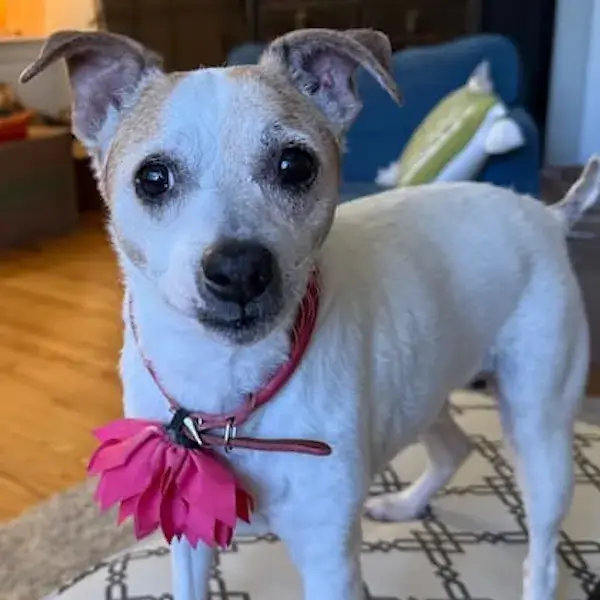
days ago
MIND-BLOWING SERVICE! Rosie and the team were amazing. She tirelessly went over all the documentation several times with me as I was very nervous. We had to change vets due to a prior short-term move from Minneapolis to Richmond just before the move to the U.K. and she took care of coordinating everything between the two U.S. vets (all prior vaccinations, etc.) in addition to the U.K. portion of our relocation FOR NO ADDITIONAL CHARGE.Even our vet in Richmond said they were the best pet relo company she had ever dealt with and will recommend them to her clients needing relo services in the future. I couldn't recommend them more.
- Michael O'rourke
Source: Google

days ago
We had an excellent experience with Starwood Pet Travel! Rosie and the Starwood team were absolutely fantastic — Rosie explained the entire process thoroughly and helped ease our worries about what to expect. Thanks to her and the team involved everything went smoothly for our fur babies! We felt reassured every step of the way. Highly recommend if you’re moving to a different country 10/10.
- Jena Arenth
Source: Google
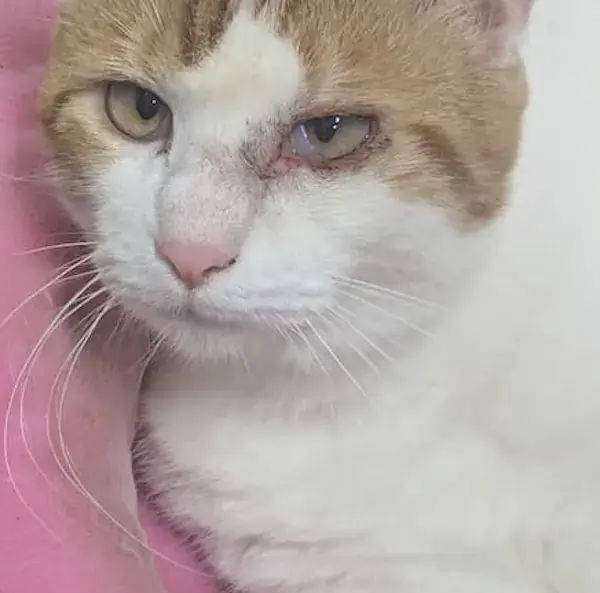
days ago
Very good experience with Sarah from Starwood moving our cats from the US to the UK. Everything went very smoothly.
- Paul Mandeville
Source: Google
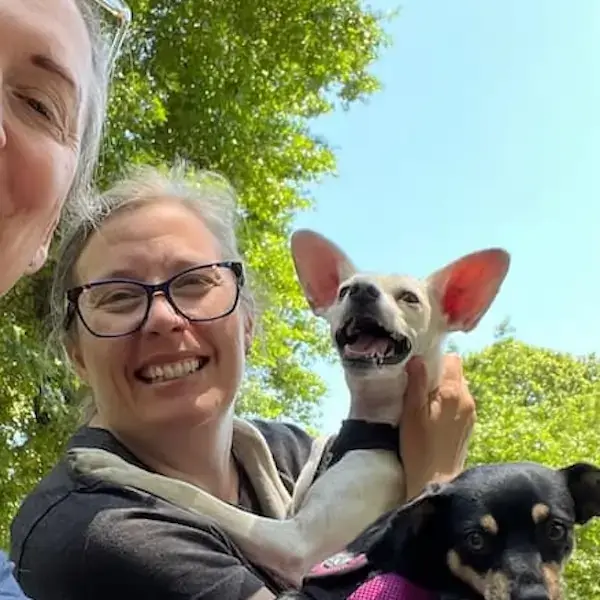
days ago
We recommend Starwood 100%. Moving our pups was the most stressful and complicated part of our move to Europe, so we wanted to make sure to use a service who could take care of everything. Rosie was responsive and proactive throughout the process. When our dates for travel had to move, she worked through all of the details. The details they take into account made us confident our pups would be safe and well cared for. From making sure we had the right crate size for a comfy ride to understanding our pups feeding, medicine, and behavioral quirks, they documented and planned for everything. Rosie met with us frequently in the time leading up to the trip to make sure we knew the plan. We received frequent pictures and updates of all of the pup's change points. Starwood's partners were incredible. Christina took the pups to the vet, got them settled at the boarding facility (Dog Days and Cat Nights in Queens New York - Absolutely incredible service and care) and took them to their flights. Rita helped us with the Europe side of the trip: she kept us informed when the plane was unexpectedly diverted and answered all of our questions about next steps. The pups arrived safely and are settling well into their new home!
- Elle Scott
Source: Google
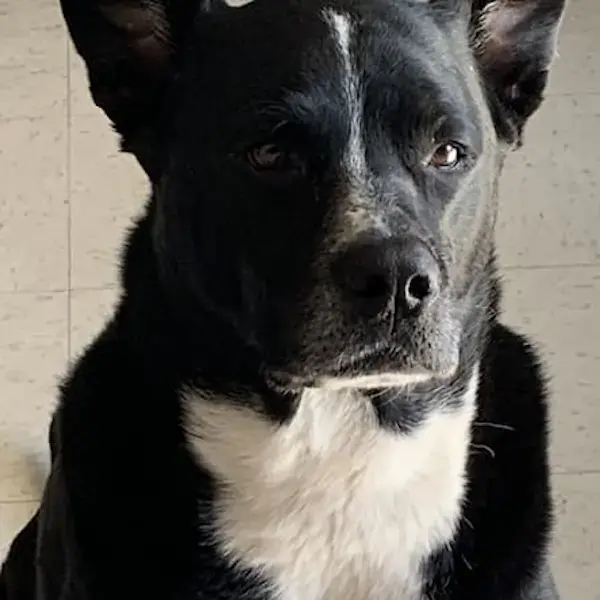
days ago
Sarah was phenomenal in guiding my family through the process of getting our two dogs to our destination. I was always informed of each stage from pickup, vet appointments, transport, and delivery. I recommend Starwood and I will be using them again in the future.
- Matt
Source: Google
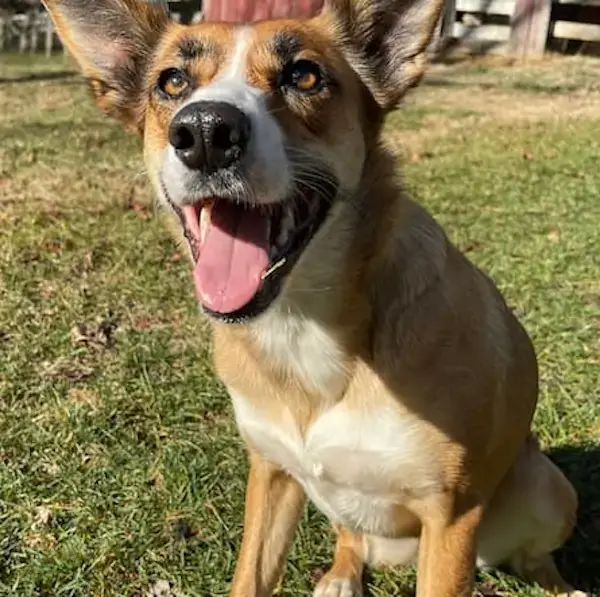
days ago
Cassidy was brilliant in organising my dogs travel home. The fight was cancelled at no fault of Starwood and they managed to get them on a flight a day later at no extra cost to us! The route worked out even better for us too!
- Megan Clelland
Source: Google
.webp)
days ago
Starwood pet travel provided an excellent and comprehensive service to transport my 2 cats from Orlando to London Gatwick. I’m not sure I could have pulled it off without them! The cats settled in soon after their arrival and everything went smoothly. Rosemary, who was my coordinator, was very helpful, knowledgeable and friendly. So glad I went with Starwood!
- Emma Nichols
Source: Google
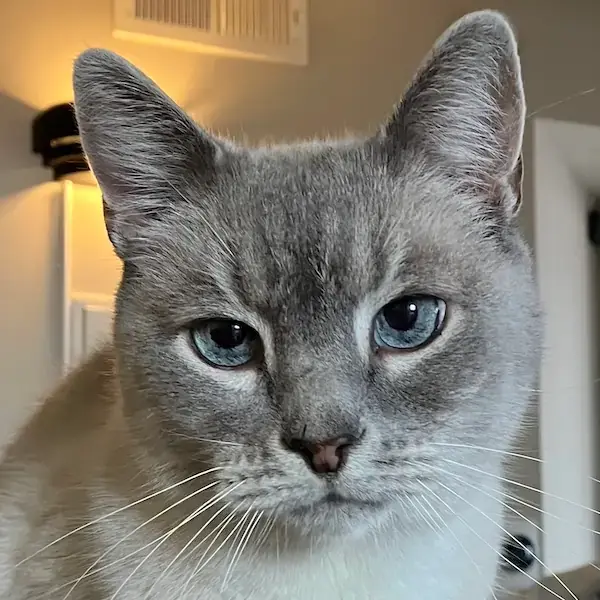
days ago
Starwood's service was worth every penny for peace of mind. They took care of everything in sending my 2 cats from the US to UK. They knew what paperwork was required, what issues to consider; they were responsive, and had people every step of the way making sure our cats were cared for. After providing information and filling out paperwork, we simply dropped the cats off at the airport and picked them up at the airport on the other side. They provide a tracker to follow your pets' flights. They handled Customs and everything!
- Jen Breen
Source: Google
.webp)
days ago
Gemma and her team were really great! Always responsive to many emails and able to overcome all the paperwork issues that arose. It is not an easy process, but Gemma made it work. Thank you!!!!
- Jenny Levion
Source: Google
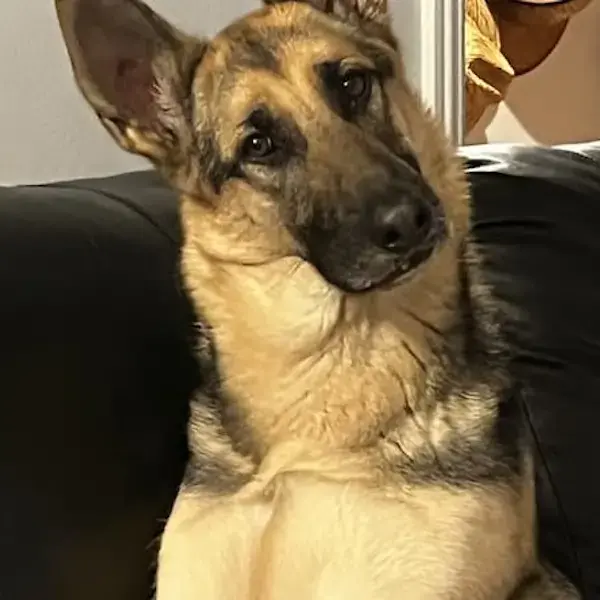
days ago
We have just used Starwood to move our German Shepherd from the US to the UK. Starwood was excellent from start to finish, helping to get us through a complicated process with relative ease. The updates on the day of travel gave us confidence that our dog was in good hands at all times and the estimates on processing times at Heathrow were really helpful in planning her collection. I would highly recommend using Starwood if you are shipping a pet internationally. A really good experience.
- Tony Kirby
Source: Google
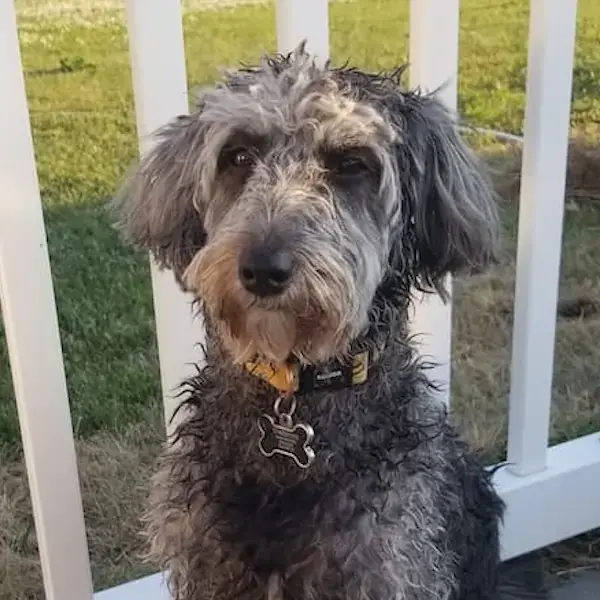
days ago
I would highly recommend Starwood pet travel after researching several companies. Cassidy was our pet travel coordinator and she couldn't have been more helpful or understanding and patient with all of our questions. We were quite nervous making sure everything would go smoothly and Kala would be safe. Kala traveled from Mishawaka, Indiana to the UK. Quinn met us to bring her to the airport and was great with her and made us feel comfortable that she'll be taken care of. Kala is happy in the UK with my daughter and is enjoying her new open landscape.
- Melanie Rockrohr
Source: Google
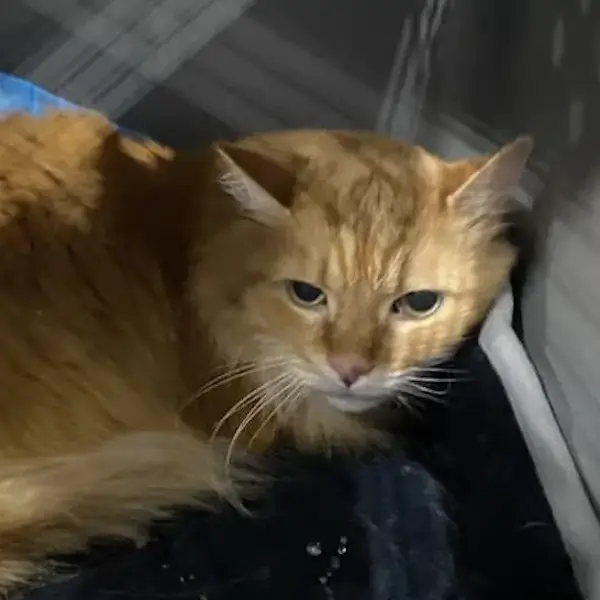
days ago
This company was recommended by friends and they did not disappoint. Our agent was Sarah and she was just amazing. Friendly, polite, really on top of things. Even my vet liked her! The driver for pick up (Danny) and drop off (Darrell?) were also lovely. I could tell all three were animal lovers. Exactly the kinds of people I would want around my cat. I would say that I would recommend them to friends, but I already have.
- H. Shrigley
Source: Google
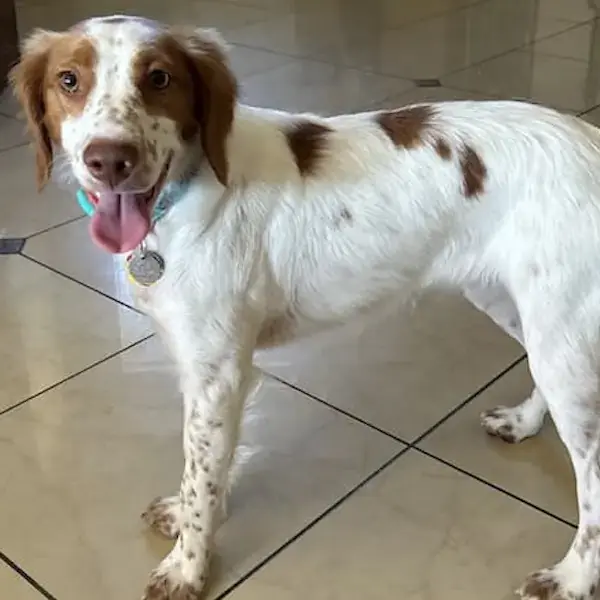
days ago
Great to work with and detailed. The communication and time getting back to each other was great!
- Paul Carter
Source: Google
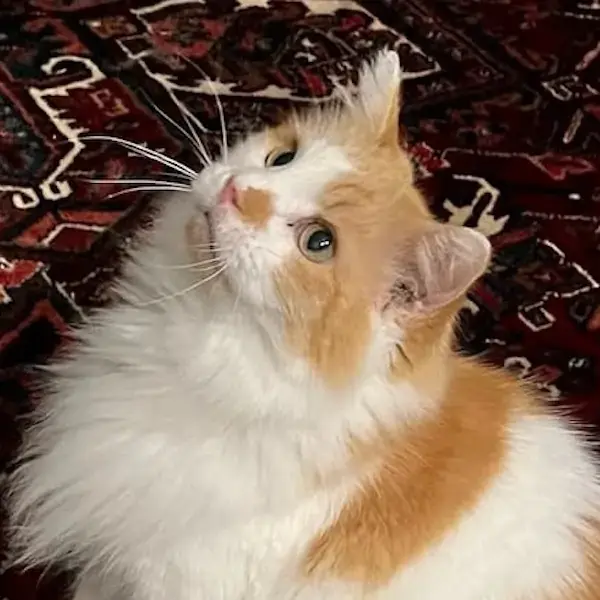
days ago
Moving a pet can be very stressful but Starwood responded to all my concerns and kept me very well informed about our cat’s travel plans and paperwork needs.
- Pip Gilmour
Source: Google
.webp)
days ago
We experienced bumps along the way but it was always handled professionally and gracefully by our team! I never felt nervous for our sweet pet family in the care of Starwood!
- Satara Bassett
Source: Google
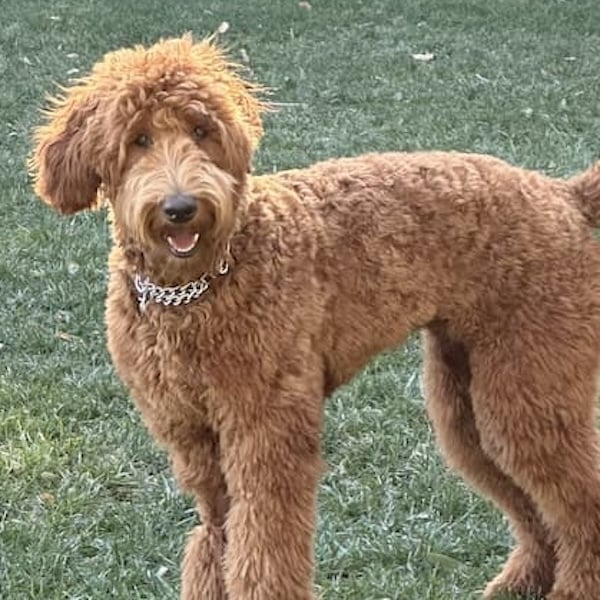
days ago
I have nothing but great things to say about our experience with Starwood. Yes, it's on the pricier side—but honestly, you can’t put a price on the level of care, attention, and professionalism they provide. From start to finish, they made sure our pup was not only safe and comfortable during travel, but also well-prepared long before the journey even began.
Sarah Whittington was an incredible support throughout the process of getting my dog to London. She was flexible and accommodating, even as I had to change the travel date multiple times. Her communication was exceptional—she was consistently responsive over email, even after hours, and always willing to hop on a call to talk through any questions or concerns.
I truly felt like both me and my dog were in good hands. I can’t recommend Starwood—and especially Sarah—highly enough
- Andi Reed
Source: Google
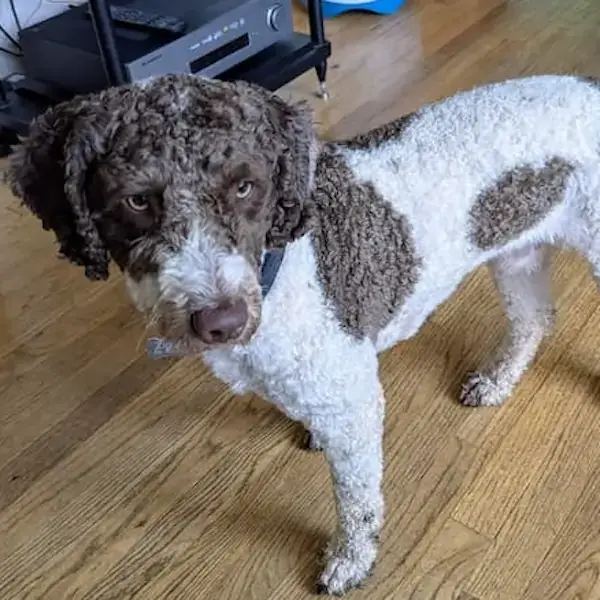
days ago
From the initial quote to the pets arrival, everyone of the team communicated and answered all my questions no matter how trivial. The pets were picked up by Jeary who was amazing with them and updated us with photos and notes. They arrived at the new house in the UK in wonderful health and quickly settled in. I can't say enough about the people. I would definitely use them again and highly recommend them to anyone looking to transfer their pets from the USA to the UK.
- Chris Perkins
Source: Google
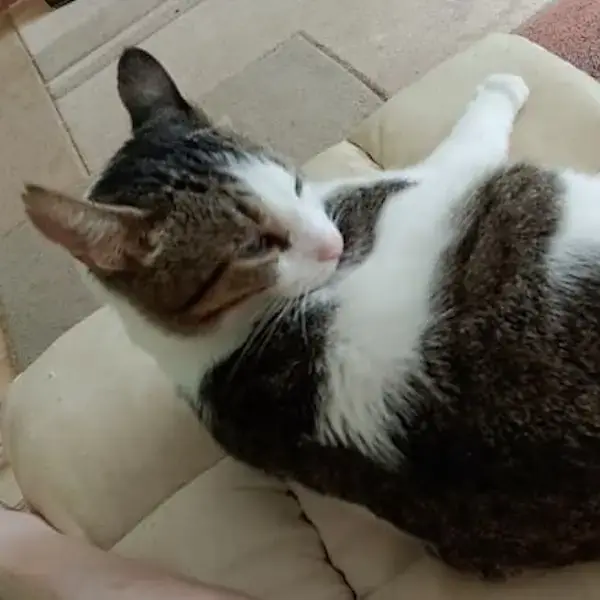
days ago
Excellent service.. of course it is a worry when your pets are away from you.
I paid for pickup from my house and delivered to my new home in the UK.
The lady who delivered them to me was great along with the guy who picked them up from my USA house.
All the folks involved in getting my pets to me did an awesome job... thank you guys.
They settled quickly after their long trip.
- Patricia Mclaughlin
Source: Google

days ago
Starwood did a fantastic job relocating our pet. They were incredibly responsive and provided every detail needed to support the move.
- Bonnie Shook-Sa
Source: Google
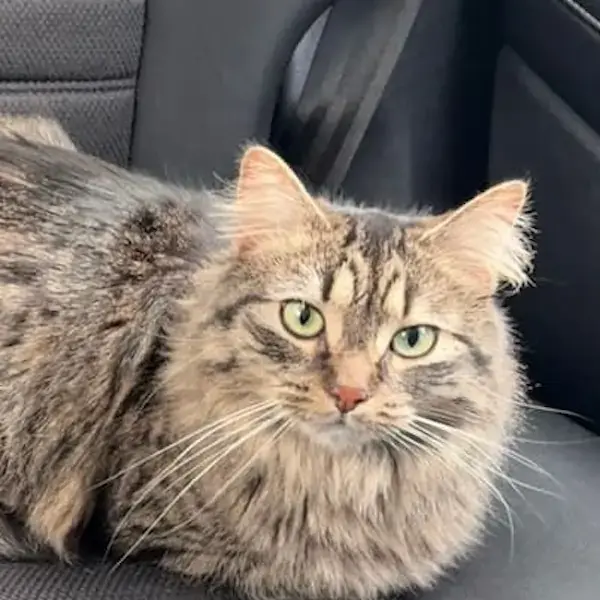
days ago
My husband Sean & I made a last minute decision to move to the UK from the US to be near his family, we had only two weeks to move ourselves & we barely managed that. We couldn’t imagine add our beloved cats to that mess as well & we knew it just couldn’t be done. There was way too much that went into it. My husband found Starwood & spoke to Paul for our initial call & he answered all of Seans questions. He was very kind & immediately after we were so confident in them we hired them right away.
Cassidy was our coordinator & she was absolutely amazing. She was always quick to respond, always spoke with confidence. She made sure we had everything we needed, we wouldn’t of been able to move them successfully without her. She is just all around a really great person.
We were so nervous about the travel, our cats are our world. Our grey cat Cassie has also always struggled with anxiety & Kiki is a very hyperactive cat & we didn’t know how they were going to react or respond but Cassidy & Paul gave us a lot of reassurance which put us at ease.
We were able to track them & got updates by the drivers, who were also really kind & always reassured us that they were happy & healthy! Cassie & Kiki adjusted very quickly upon arrival. We don’t know if that would have happened if we would have went with any other company.
- Mary Bickerton
Source: Google
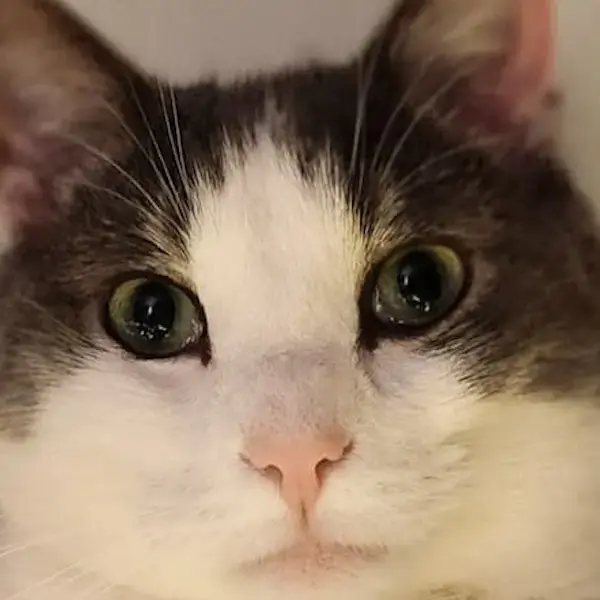
days ago
Our coordinator, Rosemary, has been so sweet and helpful throughout the entire journey! Peggy and Steve traveled from the US to the UK. Starwood worked with my vet on the health certificates (made it much less stressful) and when there were hiccups during planning, Rosemary handled them. I was so nervous sending my cats away, but I knew they were in good hands. I was also reassured during their journey when I would get updates on their plane take-off/landing and update photos. I would definitely recommend Starwood for international travel. My cats are happy and healthy, which is all I was hoping for!
- Madelyn Taylor
Source: Google
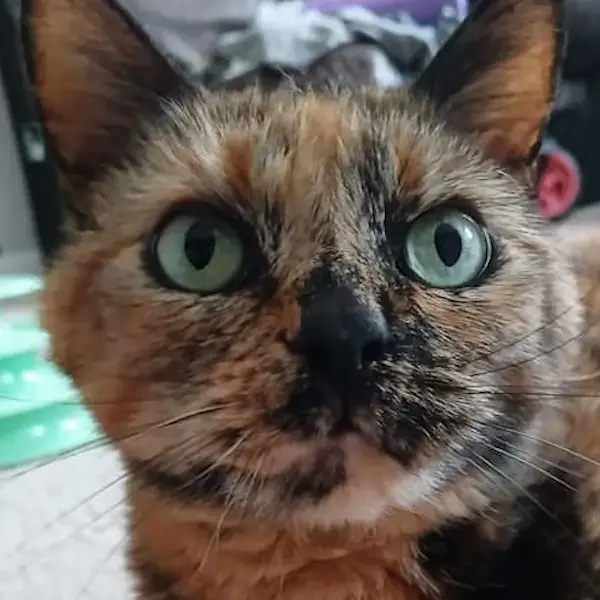
days ago
I worked with Cassidy Ryan to transport my cat and couldn't be more pleased. Cassidy was amazing and was always just a phone call or email away. We did run into a few issues with the process and Cassidy was always there to answer questions and immediately handle situations.
I was super anxious during the process and I couldn't be more pleased that I chose Starwood and was paired with Cassidy.
- Michael Quinn
Source: Google
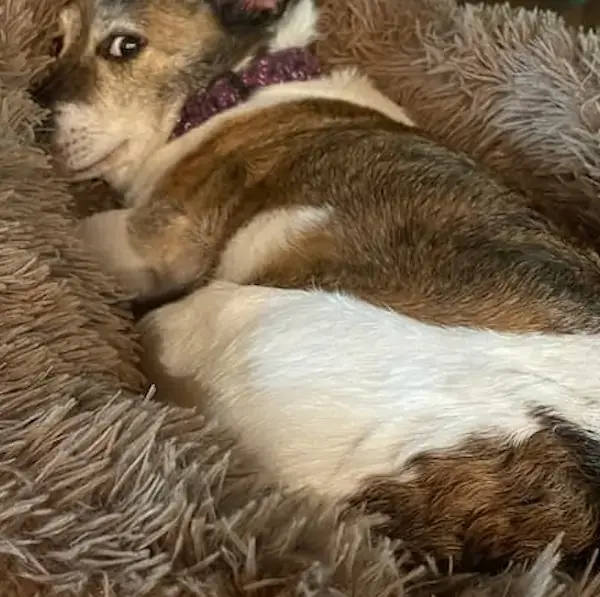
days ago
I had a wonderful experience with Starwood Pet Travel! I loved their different price options for pet transport and never once felt as though my pup wasn't cared for, despite getting the cheapest option. They were amazing, especially Cassidy who was there every step of the way. She answered every single question I had and weathered some unexpected storms. I appreciate her and the Starwood team so much for getting my fur baby to me safely in Scotland. Thank you!!
- Marly Trahan
Source: Google
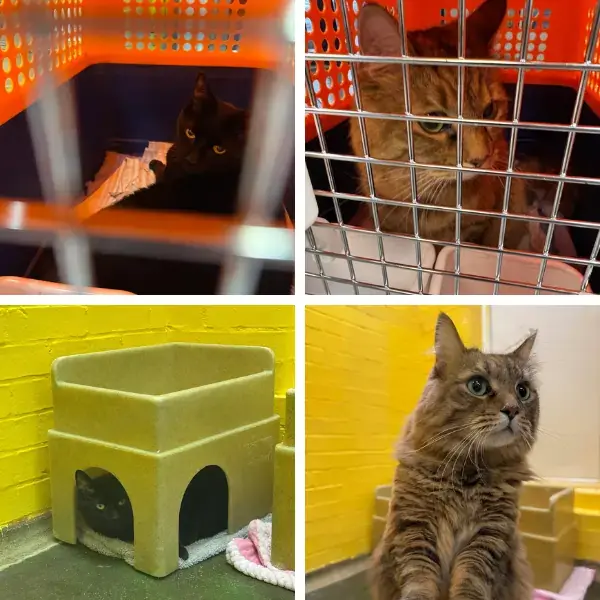
days ago
We couldn't have had a better experience moving our two cats from the USA to England.
The initial thought of everything you have to do is extremely overwhelming and anxiety inducing, especially if you haven't done it before. But Starwood made the process effortless for my family. From the initial quote to the cats being picked up at Heathrow, Starwood were phenomenal and extremely knowledgeable.
Rosemary Cann was our Pet Travel Coordinator and she was excellent. We couldn't have asked for a better experience. She relieved us of all stress and handled things majestically. Our vets back in the US commented how great she had been during the back and forth with them setting up paperwork and the health certificates. Everything we were anxious about dissolved immediately when we started working with her.
When the big day came for them to be picked up, it all went smoothly. Someone came to the house, went over everything, and then we got regular updates as they made their way to the airport and then through check in. Once in the air we knew there were good and then when they were unloaded we continued to get regular updates right up until I collected them.
I would highly recommend Starwood Pet Travel if you are looking to move and transport your pets. We don't have any plans to do a big move again, but if we ever did, we'd be straight back in touch with Starwood and would request Rosemary
EXCELLENT!!
- Tom Caswell
Source: Google
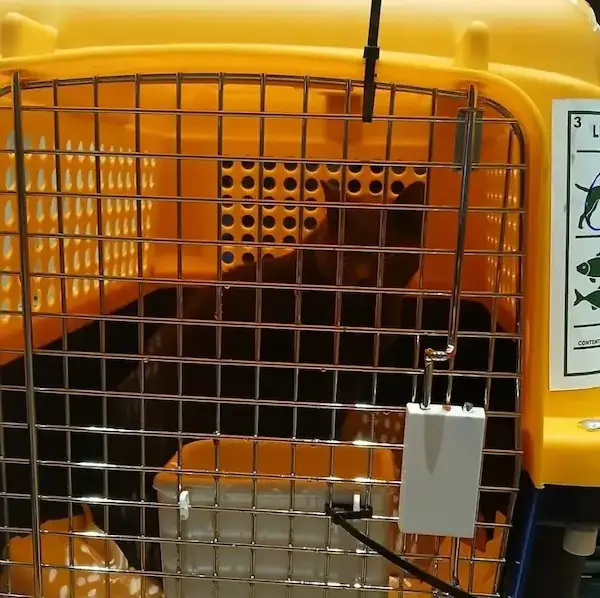
days ago
Starwood Pet Travel was an absolute life saver when helping us move from the US to the UK! Communication was simple and easy! I cant imagine trying to handle everything that had to be done without their help! I highly recommend this company! The amount of care they had for our Advil. They were to handle the communications between all of us and the Vet, in being sure that everything was done on-time and all the correct paperwork for his arrival in the UK! Thanks so much to Sarah with Starwood and everyone else for the stress free experience!
- Zhenya H
Source: Google
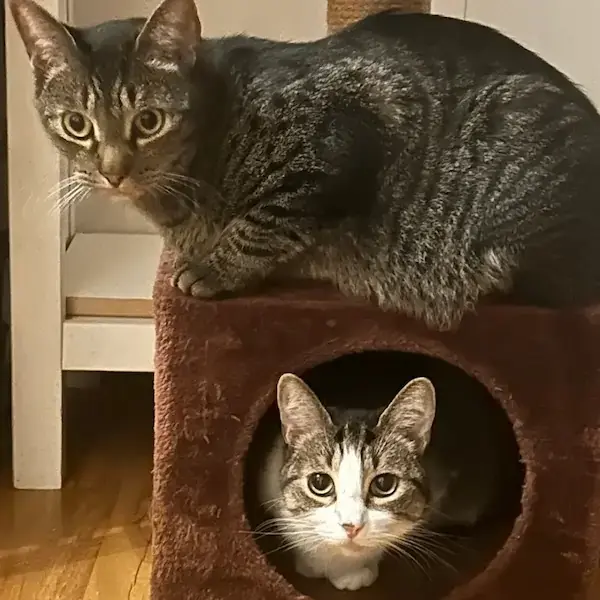
days ago
Starwood pet travel provided an excellent and comprehensive service to transport my 2 cats from Orlando to London Gatwick. I’m not sure I could have pulled it off without them! The cats settled in soon after their arrival and everything went smoothly. Rosemary, who was my coordinator, was very helpful, knowledgeable and friendly. So glad I went with Starwood!
- Emma Nichols
Source: Google
.webp)
days ago
A positive experience, we were worried about the move from USA to Uk and whilst it was stressful that was only because of what we were thinking could go wrong rather than anything bad happening! Sarah made us feel comfortable all the way through the process and was quick and detailed in responding to our questions. We would recommend.
- Stephen P.
Source: Google

days ago
Great to work with and detailed. The communication and time getting back to each other was great!
- Paul Carter
Source: Google

days ago
This company was recommended by friends and they did not disappoint. Our agent was Sarah and she was just amazing. Friendly, polite, really on top of things. Even my vet liked her! The driver for pick up (Danny) and drop off (Darrell?) were also lovely. I could tell all three were animal lovers. Exactly the kinds of people I would want around my cat. I would say that I would recommend them to friends, but I already have.
- H. Shrigley
Source: Google

days ago
I would highly recommend Starwood pet travel after researching several companies. Cassidy was our pet travel coordinator and she couldn't have been more helpful or understanding and patient with all of our questions. We were quite nervous making sure everything would go smoothly and Kala would be safe. Kala traveled from Mishawaka, Indiana to the UK. Quinn met us to bring her to the airport and was great with her and made us feel comfortable that she'll be taken care of. Kala is happy in the UK with my daughter and is enjoying her new open landscape.
- Melanie Rockrohr
Source: Google

days ago
We have just used Starwood to move our German Shepherd from the US to the UK. Starwood was excellent from start to finish, helping to get us through a complicated process with relative ease. The updates on the day of travel gave us confidence that our dog was in good hands at all times and the estimates on processing times at Heathrow were really helpful in planning her collection. I would highly recommend using Starwood if you are shipping a pet internationally. A really good experience.
- Tony Kirby
Source: Google
.webp)
days ago
Gemma and her team were really great! Always responsive to many emails and able to overcome all the paperwork issues that arose. It is not an easy process, but Gemma made it work. Thank you!!!!
- Jenny Levion
Source: Google
Pet Travel to the United Kingdom
We have a team of experts ready to help with every aspect of your pet’s move to the United Kingdom. Our services to the United Kingdom include:
- Door to door pet transport, both international and domestic
- Assistance with health certificates, import certificates, and other travel documents needed for animal transport
- USDA endorsement and consular legalization (when needed) of all relevant documents where required
- Airline approved flight kennels provided with personalized labels, identification and emergency notification instructions
- Customs clearance and delivery to your home
- Local pet taxi service to and from the airport, your home, veterinarian, kennel, or groomer – available in your area
- Travel consultation and flight reservations
We will inform you of your pet's full itinerary before the trip and we will update you throughout your pet's journey.
How to Ship a Pet to the UK: Essential Guide for Dog and Cat Travel to England in 2025
From our Pet Travel Insider podcast: A quick overview of the pet transport process.
Need to bring your pet to the UK?
Learn about costs, airline rules, cargo vs cabin travel, and how to safely transport your dog or cat from the US with Starwood Pet Travel.
Relocating to the United Kingdom with your beloved pet requires careful planning and adherence to specific regulations. Whether you're moving permanently or just visiting England, bringing your dog or cat along involves understanding the UK's strict pet import requirements to ensure a smooth transition for your furry family member. The UK requires all pets to be microchipped, vaccinated against rabies at least 21 days before travel, and dogs must receive tapeworm treatment 24-120 hours before entry.
Many pet owners find the process of shipping their animals to England overwhelming at first, but breaking it down into manageable steps makes it much more approachable. The requirements exist to protect both the local animal population and your pet, ensuring everyone stays healthy and safe during international travel.
How much does it cost to ship a pet to the UK?
Pet shipping costs to the UK typically range from $2,000 to over $4,000 depending on your departure location, pet size, and whether you use a professional pet relocation service. While this may seem substantial, proper preparation prevents potential quarantine periods and additional expenses that could arise from incomplete documentation or missed requirements.
Does my pet need a passport or animal health certificate in the UK?
From our Pet Travel Insider podcast: Do you need a pet passport?
Dogs and cats entering the UK require either a Pet Passport or an Animal Health Certificate (AHC). Pet Passports are only available to UK and EU residents, while travelers from other countries need an AHC.
The AHC must be issued by an official veterinarian within 10 days of travel to the UK. This document confirms your pet meets all health requirements, including microchipping and rabies vaccination.
AHCs are valid for entry to the UK for up to 10 days after issuance, for onward travel within the EU for 4 months, and for re-entry to the UK for 4 months. Each certificate covers only one trip.
What is the UK Customs Declaration Process for pets?
When arriving in the UK with a pet, owners must declare their animal to customs officials. This process varies slightly depending on the port of entry.
At major airports with animal reception centers, pets must be delivered directly to these facilities. Staff will check all documentation and verify compliance with entry requirements.
Pet owners should complete a C5 Customs Declaration Form prior to arrival. This form includes details about the pet, owner contact information, and declaration that the pet is not for commercial sale.
Travelers should be prepared to pay any applicable VAT or duties if bringing a new pet to the UK. Animals brought for breeding or commercial purposes face additional requirements.
Import Permits and Supporting Documents
While standard pets (dogs, cats, ferrets) don't require import permits for the UK, additional supporting documents are necessary. These include:
Proof of microchipping - Documentation showing the pet was microchipped before or at the same time as rabies vaccination.
Rabies vaccination certificate - Must show vaccination date, vaccine details, and that the pet was at least 12 weeks old at time of vaccination.
Tapeworm treatment certificate - For dogs only, must be administered 24-120 hours before scheduled arrival time.
Some pets may require additional health certificates if traveling from countries with specific disease concerns. These requirements change based on the current health status of the originating country.
All documents must be originals (not copies) and written in English or accompanied by certified translations. Incomplete documentation is the most common reason for entry refusal.
Pet Microchipping and Identification in the UK
All dogs and cats must be microchipped before entering the UK. The microchip must comply with ISO standards
From our Pet Travel Insider podcast: A quick overview of the pet transport process.
11784/11785 and contain a 15-digit number. This procedure must be done before rabies vaccination, or the vaccination won't be considered valid for UK entry.
Pets should wear a collar with ID tags during travel, though this doesn't replace the microchip requirement. Owners should record their pet's microchip number in multiple locations and carry this information while traveling.
If a pet already has a non-ISO compliant microchip, owners don't necessarily need to
implant a new one. They can either bring their own microchip scanner or ensure the officials at the port of entry can read the existing chip.
What are the pet travel crate requirements in the UK?
The International Air Transport Association (IATA) sets strict standards for pet travel containers entering England. Crates must be constructed of rigid plastic or wood with metal doors and secure fasteners.
Size requirements stipulate that pets must stand naturally with head not touching the roof. They must be able to turn around completely and lie down comfortably.
Essential crate features include:
- Solid construction with no plastic or wooden parts that pets can chew
- Metal door with secure locking mechanism
- Ventilation holes on all four sides
- Leak-proof bottom with absorbent bedding
- Water container accessible from outside
- "Live Animal" labels in English
- Directional arrows indicating upright position
Familiarize your pet with the crate weeks before travel by creating positive associations. Place treats, toys, and familiar bedding inside to reduce stress during the journey.
Documentation and Paperwork
Proper documentation is essential when shipping a pet to the UK. Ensuring all paperwork is correct and complete helps avoid delays, quarantine, or even entry refusal for your pet.
Does the UK restrict certain dog breeds?
The UK enforces a ban on certain dog breeds under the Dangerous Dogs Act 1991. Four breeds are specifically prohibited:
- Pit Bull Terrier
- Japanese Tosa
- Dogo Argentino
- Fila Brasileiro
Dogs that physically resemble these breeds may also be refused entry, even with documentation claiming different ancestry. The assessment is based on physical characteristics rather than pedigree alone.
Owners of breeds that might be mistaken for prohibited types should consider obtaining expert confirmation of breed type before travel. This documentation may help avoid complications at the border.
No cat breeds are currently banned from entering the UK.
UK Rabies Vaccination Guidelines
Rabies vaccination is mandatory for all dogs and cats entering the UK. The vaccination must be administered after microchipping and at least 21 days before travel. This waiting period is crucial for developing immunity.
Important vaccination timeline:
- Microchip first
- Rabies vaccination after microchipping
- Minimum 21-day wait before travel
The rabies vaccine must be valid throughout the pet's journey. Most rabies vaccines are valid for 1-3 years, depending on the product used. Pet owners should ensure their veterinarian uses a vaccine approved by UK authorities.
For young animals, the UK allows entry only if they are at least 12 weeks old and have received their rabies vaccination at the appropriate age.
Additional Vaccinations and Health Checkups
Beyond rabies, dogs traveling to the UK must receive tapeworm treatment from a veterinarian 24-120 hours (1-5 days) before arrival. The treatment must contain anti a parasitic medication or an equivalent proven to be effective against Echinococcus multilocularis.
A comprehensive health check is required within 10 days of travel to the UK. During this visit, a USDA-accredited veterinarian will:
- Verify the microchip is functioning
- Check vaccination records
- Issue the health certificate
- Administer the tapeworm treatment for dogs
While not required by UK law, it's advisable to ensure pets are current on routine vaccinations such as:
- Distemper, hepatitis, parvovirus for dogs
-
Feline panleukopenia, calicivirus, and rhinotracheitis for cats
These additional precautions help protect pets from common diseases they might encounter while traveling internationally.
🎙️ Pet Travel Insider Podcast
Moving Your Pet to the UK: Everything You Need to Know
Our experts break down the essential details of bringing your dog or cat into the United Kingdom, covering required documentation, veterinary checks, timelines, and common questions to ensure a smooth relocation experience.
▶︎ Subscribe & Watch More on YouTube📄 Click to Read Transcript
Adam Melton (01:25): Hello and welcome to the Pet Travel Insider podcast, a podcast produced by Starwood Pet Travel to help pet owners who are considering transporting their pets gain an understanding of the process, learn the ins and outs, and hopefully gather a tip or trick to make the process go smoother. On this podcast, we talk to experts, including pet transporters, government officials, and vets, all in order to give you an insight you need to approach.
On this podcast, we talk to experts, including pet transporters, government officials, and vets, all in order to give you the insight you need to approach pet travel with confidence. I'm your host, Adam Melton. I am the VP of strategic initiatives here at Starwood Pet Travel. And I've been in the pet travel industry for nearly a decade. And today I am joined also by one of Starwood's own, Ryan Bole. Ryan is Starwood's director of customer experience, and she oversees day to day the team of pet travel coordinators.
Ryan Bole (02:12): Thank you.
Adam Melton (02:19): That work with our clients who the Pet Travel Coordinator is responsible for managing the client's move. They're the main point of contact for the client and they're working behind the scenes with our operations team in order to make sure the vet documents are correct, import requirements are met, and booking flights and all those sorts of things in order to ensure a seamless end-to-end move. And so she oversees that team. And today with Ryan, we're going to be doing a deep dive and discussing the process of how to get your dog or cat to the UK.
The UK is one of our top destinations. In fact, it probably is one of our top destinations as far as monthly moves we have from the US over to the UK. And overall, it just seems like there's a ton of volume right now of folks relocating from the US to the UK. So we always get tons of questions about that process. So Ryan, welcome to the Pet Travel Insider podcast.
Ryan Bole (03:10): Thanks for having me, Adam. Happy to be here.
Adam Melton (03:12): Yeah, no worries. So by way of introduction, before we jump into the content, can you share a little bit about your background and how you got into to pet travel? Because we have a colleague who always quips that no one as a child grew up thinking and dreaming that they were going to become a pet shipper because it's such a niche job, such a niche industry. So how did you get your start? What was your background before you got into pet travel?
Ryan Bole (03:35): Yeah, sure. So I'm from Colorado. I went to college at University of Colorado in Boulder. I studied journalism there and mass communication with emphasis on advertising. Very different from pet shipping, I know, but I gradually made my way there.
After that, I worked for satellite and cable television, managing the paper bill. Then Whole Foods doing marketing and hosting healthy eating dinners. I later moved into property management, worked in dietetics at a hospital in Denver, and finally at a co-working space as culinary director.
Adam Melton (05:20): Okay. Eight years. Okay. I was going to ask. Okay. Yeah. Well, yeah. Yeah. None of us come with degrees in pet shipping when we started this job. It's all on the job training, isn't it?
Ryan Bole (05:31): Yep, yep, definitely. I did not know what to expect, but loved it from the start.
Adam Melton (05:34): Yeah, it's a rewarding job. We get to help folks every single day get their pets to their new homes. Whether you're relocating for work or for military or retiring overseas, we help all sorts of clientele and it's really rewarding seeing those pictures on the other side of the pet or pets reunited with their family. So, okay, let's dive into today's topic, which again, we're going to be talking about how to get your pet. From the US to the UK if you're listening to this and you're located somewhere else, but you're headed to the UK Just keep in mind that the rules for you might be a little bit different The import rules for a country are always set based upon where the pet is originating from where they're coming from And so the rules can be very different if you're if you're listening from Asia or from Europe or from Australia, New Zealand the rules might very well be different from what we're going to be discussing today. So just keep that in mind that this podcast is going to specifically focus and look at the rules for getting a pet, a dog or cat from the United States to the United Kingdom. So first, Ryan, can you kind of give a high level overview when you're first working with a customer, when you're explaining to them the process, when they first sign up with us, kind of give that kind of high level overview of what it takes to get a dog or cat over to the UK.
Ryan Bole (06:53): Yeah, so I'll always start off with the vaccine requirements for that specific country. And so for the UK, it's pretty clear cut. You have to have a microchip implanted prior to the most recent rabies. And that rabies vaccination needs to be done within the year of travel. So even if you do have a three-year vaccine that was done in 2023, You still need to get a booster within the calendar year of travel, as well as wait 21 days before you can leave. And I do always recommend when you go in for that rabies to get the microchip scanned, make sure that it matches what you have on all your documentation. That's probably the most important part.
Adam Melton (07:36): Right, because the microchip is kind of the way to prove that the pet belongs to the paperwork that's traveling with the pet, right? So what happens with that microchip when the pet arrives in the UK? What happens at that point? They scan it, correct? .
Ryan Bole (07:53): Yep, they scan it, they make sure that it matches what's on the health certificate and what's on the rabies. So that's why if it doesn't match, then we get into issues there. So that's why it's the first step and the most important step.
Adam Melton (08:03): Okay, okay. So rabies and then ensuring the microchip is working and it matches the rabies certificate that you have. So, and then what's next after that?
Ryan Bole (08:12): Right. We do recommend getting vaccines that would be required for boarding just in case we will have to board your pets. So for cats, FV, RCP, dogs, it's a distemper combo vaccine called DHPP as well as Kennel Cough or Bordetella. But then following having all the vaccines together, something that's a little different about the UK is you have to arrive with an ink signed rabies certificate. It can't be digitally signed. It has to be an original document. So we'll work with your vet, make sure that's all ready to go so you can pick it up.
Adam Melton (08:50): Gotcha. And so have that signed and then any other steps as far as getting the pet ready. And let's specifically focus on dogs because as I know that there's a difference between dogs and cats slightly. So after you get that Blue Ink Signature Rabies certificate, what's next?
Ryan Bole (09:13): So aside from just kennel acclimation, that's also important and that's something we'll guide you through, but that's applicable for every country. We'll work with you on timing because then the next step would be for us to book the flights and for you to book your health certificate appointment with a USDA accredited vet. There's two different types of certificates based on when the owner is traveling. If the pet owner is traveling within five days before or after their pet, the health certificate is valid for 10 days. If not, you need to go to the vet within 48 hours of travel. So we get into the details with you on that and walk you through everything. The difference between a dog and a cat is a dog needs to have a tapeworm treatment done within five days of arrival.So yeah, we'll work with you on the timing of that, but it's basically two appointments. So a health certificate exam where they will do a full physical exam, check ears, eyes, respiratory, they'll do a temperature, and then they will scan the microchip there too, just so we can catch anything prior to departure. But yeah, cats do not need the dewormer.
Adam Melton (09:40): OK, so that's the main difference between dogs and cats because the commercial and non-commercial, which we can dive into a little bit deeper later, that's the same for dogs and cats. The main difference is just that tapeworm treatment, right? OK, gotcha. So OK, so we've talked about dogs and cats kind of high level process to get the pet ready. What are some of the sometimes mistakes or problems that you run into when you're kind of looking over the vet work and figuring out that timeline. What are some common issues that arise with, whether that be the rabies or health certificate, tapeworm, any of those things you've mentioned, there's some common things that come up.
Ryan Bole (11:12): Yeah, so the tapeworm, that timing can be a little difficult, like if we're not all on the same page. So essentially, the USDA will endorse the health certificate with a raised seal. They'll send it back via FedEx to either the owner or the vet office. And then the tapeworm treatment needs to be listed on the endorsed health certificate. know, timing issues, if FedEx is running late, if the endorsement doesn't come back in time, we have to rework everything. So that's why it's helpful to have someone like Starwood guiding you through the process and making sure things are done on the correct schedule.
Adam Melton (12:04): Yeah, yeah, having someone to help orchestrate and organize multiple stakeholders that are involved in getting your pet ready, right? It's not it's not just the owner's responsibility. And you know, you have to rely on the vet, you have to rely on the USDA, you have to rely in some cases on FedEx and their service to get that back in time. And and Starwood's there to help, of course, organize and orchestrate that. But there's a lot of stakeholders that come together. So it is really a beautiful thing. I mean, obviously, most of our moves.
Ryan Bole (12:40): Right, yeah, we're more like conductors.
Adam Melton (13:10): Yeah, right. Yeah, that's good. That's a good metaphor. Okay, so. So one common question we see that comes up and you didn't mention this in the rules. So, you know, speak to this. But I see a lot of searches about quarantine. Does my does my will my dog need to be quarantined when it arrives in the UK? What are the quarantine rules? Is there a quarantine period applicable to my pet arriving into the UK? So is that the case?
Ryan Bole (13:32): Nope, there is no quarantine in the UK. know they used to have that many moons ago. But the only time a pet would have to quarantine would be if they get there and either their microchip has fallen out or it's not scanning or the number doesn't match what's on the rabies. At that point, they cannot connect the rabies to that animal and they can't correctly ID it. So a new microchip would need to be done and then a rabies vaccination and then they do need to stay in quarantine for 21 days.
Adam Melton (14:07): So everyone should you know have a sigh of relief there that's not required Can't say the same for some of our other destinations like Australia that do have quarantine requirements But for the UK no quarantine so long as that microchip works and matches which you know If you work with starwood, we definitely help you ensure that that is is gonna be the case Okay, cool. So no quarantine. You've given us a high-level overview of the process. Can you kind of walk us through and talk through the logistics and the timing of what happens when the pet arrives in the UK? Can maybe start by saying, can a pet arrive at any UK airport or are there certain designated ports that the pet has to arrive at?
Ryan Bole (15:20): Um, yeah, so there are certain airports. can, I can rattle them off if you'd like. Um, there's not that many. Okay. So there's Edinburgh and Glasgow and Scotland. And then we have Heathrow, Manchester, um, El Gatwick. Yeah. And so there should be all of them. Um, but yeah, when a pet arrives, um, the next step is to, to get them into one of the facilities that holds them and houses them while customs is cleared. So luckily in most UK ports, they are brought into their own kennel run. So they are out of their crates, able to go potty, eat, drink, the whole nine yards. So that's really nice because a lot of countries, they don't have such facilities. And then customs, it depends on how busy they are. It'll typically take between three to five hours. And then if you're gonna pick up the pet, you'll just come to the facility, pick up, otherwise we'll be delivering. So it's pretty smooth on the other end.
Adam Melton (16:46): Gotcha. Okay. And so in total, the process from the time that the flight lands to when, you can pick your pet up, how long does that typically take?
Ryan Bole (17:14): Like I said, is very different day to day depending on how busy the government customs agent is, but on average I would say four hours.
Adam Melton (16:18.301) Okay, four hours. And it probably depends too on which port they're going into, Heathrow versus Manchester versus Edinburgh. Okay. All right. Gotcha. Okay. So pet has to arrive at one of those specific ports where there is an animal reception center as it's called, right? It's a border control post that the UK government manages. And then they oversee that import process, which can take roughly four hours, you said, right? Gotcha. Okay.
Adam Melton (16:46): All right, perfect. So no quarantine, they're released same day, so long as there's no microchip issues, as we mentioned. Okay, so another question we often get in that search for often in regards to getting their pet, for someone getting their pet from the US to the UK is about pet passports. We see lots of questions about whether a pet passport is required, what is a pet passport? again, I didn't hear you mention anything like that.
Adam Melton: In the overall process. what's that about? Do know anything about that?
Ryan Bole (17:14): Yeah. So the EU does authorize pet passports for travel within the EU and the UK. So it makes things a bit easier to travel with your pet while you're abroad. But coming from the US, the UK or the EU, they don't really recognize pet passports in lieu of a health certificate. So you can still verify a microchip and a rabies.
Adam Melton (17:34): Okay. Okay.
Ryan Bole (17:39): Done within a pet passport as long as it's done by a vet abroad in whatever country you're in. But you cannot use it to travel with as a passport as you would in the EU.
Adam Melton (17:41): Mm-hmm. Okay. Uh-huh.
Adam Melton (17:52): Okay. So in the EU, you can travel without a health certificate. That's the pet passport takes that place. But you're saying if you're going from the U.S. to the UK, if you already have a pet passport, you can use that to prove you say microchip and rabies. okay. Okay. Okay.
Ryan Bole (17:58): Right.
Ryan Bole (18:05): Yeah, because the microchip will be listed in there as well as the implant date. So that's helpful. And then the vaccines are just in a pamphlet.
Adam Melton (18:14): Gotcha. OK. So but it does not take the place of one of the health certificates, which is then endorsed by the USDA. OK. So gotcha. And so for most most people moving from the US to the UK, unless they're former, you they were formerly in the EU or UK, probably not going to have a pet passport anyway. And so really, it's just not applicable for US born pets. It's not something that is required at all.
Ryan Bole (18:20): Correct, yeah, you can't skip that step.
Ryan Bole (18:32): Right.
Adam Melton (18:39): We would prove rabies and microchip by other means through getting that rabies certificate And then of course the health certificate. Okay. Gotcha. Okay, so Good. We've talked about the the pet passport which often comes up and you mentioned the pet passport In some instances over in the EU can take the place of that health certificate But here in the US have to have the health certificate Let's let's dive into and talk specifically about that health certificate. You mentioned at the beginning. There's some timing on when
Ryan Bole (18:39): Christ.
Ryan Bole (18:47): Yeah, exactly.
Adam Melton (19:10): That has to be done. Can you give us an overview again of the timing of that health certificate?
Ryan Bole (19:16): Yeah, so our recommendation, and this is assuming if an owner is traveling within that five days on a non-commercial certificate, is that the pet goes into the vet about seven to eight days before travel. The USDA typically takes three to five business days to process the endorsement. And so that's our reasoning there. I will say you can go in within 30 days of travel for the vet appointment.
Ryan Bole (19:45) We don't often recommend that because it's not giving an accurate description of what the state your animal's in at the vet appointment. And it's important that the microchip's scanned as close to departure really as possible because as we talked about, that's important. And yeah, again, with the commercial certificates, that's done within 48 hours of travel. So that's typically on a certain time frame. So the vet appointment would be Monday, fly out on Wednesday is usually.
Adam Melton (20:16): Okay. And you said at that appointment, the, what exactly is the vet doing? What's the process? What are they, what are they expected to do to do that health certificate?
Ryan Bole (20:25): Yeah, so we do send them very thorough instructions, but more from a technical perspective about the endorsement and scanning the microchip. But it's really just a typical health exam to make sure that the vet will sign off that the pet is fit to fly. We haven't had many cases where they go into the vet and they're not. If it's anything, it's unusual, like respiratory issues.
Ryan Bole: Breathing, that's why snub-nosed dogs can't fly in the summer, because that puts them at a higher risk. They're checking the eyes, ears. Like I said, they have to take the temperature. Feeling around for any unusual or concerning bumps. But yeah, really it's just a general health check, as if to make sure that they can travel.
Adam Melton (21:16): Okay, and then so they do that exam, they sign the health certificate, which if you work with Starwood, we typically pre-fill that health certificate with all the pertinent details so that the vet can pretty much do the minimum, right? We ensure that everything is filled out correctly. We give it to the client who gives it to the vet, and then the vet can basically just sign off on it, right? They sign and date it, and then what happens from there?
Ryan Bole (21:24): Yes.
Ryan Bole (21:30): Right.
Ryan Bole (21:39): Yeah, so the purpose of us pre-filling it out is because we do get it approved from the destination country ahead of time. So we know there's no issues and we really want the vet to focus on doing a thorough exam and not worry about the paperwork because that's already handled. yeah, so from there, the vet needs to upload the documents electronically through a system called VHICS on the USDA website. And then the USDA has it in their queue to review.
Adam Melton (21:46): Okay.
Ryan Bole (22:09): If your vet works with us directly and uses our USDA tracking, we help support your vet by letting them know, this was returned because a date was forgotten. So that's another benefit. Vets are busy doing surgeries, going in and out, but we're there tracking that document. And then we also...
Adam Melton (22:28): Okay, but that's only if it's done through the electronic system, because there is the option where you can manually or you can physically FedEx the document to the USDA, but we really recommend that VHICS, making sure that you work with, uses and is set up with that VHICS, that USDA system, so that the benefit being that we can track it, right?
Ryan Bole (22:50): Right, an issue with FedExing the actual document is USDA offices have downsized a bit and only I think one or two offices will accept those FedExes. So we try to avoid that at all cost for those reasons.
Adam Melton (23:08): So the VHICS being an important thing, presumably not all vets are set up with that, especially if they're not doing a lot of export health certificates, but is that a process that is pretty straightforward for a vet to sign up for?
Ryan Bole (23:24): Yeah, so it's important, and I don't know if I mentioned this, but your vet is USDA accredited that allows them to do a health certificate and work with our Department of Agriculture. It is straightforward if your vet wasn't signed up and we had to walk them through that. We have a vet team that can easily do that.
Adam Melton (23:42): Gotcha, okay. So we submit that or the vet submits it through this VHICS system to the USDA, goes into their queue. And you mentioned kind of some of the downsizing that has happened. Is that queue, that response time of endorsement, is that slowed at all or what do you generally recommend as kind of the typical lead time for that?
Ryan Bole (24:01): Yeah, so it has slowed a little bit, but I've noticed since we list the departure date, that's how they prioritize things. So again, for a commercial move, that's gonna be at the top of their priority list. Despite downsizing, we're still seeing health certificates come in in time for the flight.
Ryan Bole: Even if they endorse it the day before, we do priority FedEx shipping. So hopefully it arrives, you know, 8 a.m. before we have to check in.
Adam Melton (24:31): Gotcha. Okay. So the USDA endorses it. They have to manually endorse it, even though we're electronically submitting it to them. They have to do an embossed stamp or something right on the document. And then they are going to FedEx that original physical form to the client or to our driver in that case. Okay. Gotcha.
Ryan Bole (24:40): Yep. Right.
Ryan Bole (24:45): Right.
Ryan Bole: Yeah, right. Yeah. So it's important we do know where that document should go. If it's not going to your vet, if you've changed your house, like please let us know because that's very important. I mean, it's the most important thing that that original document travels with your pet. And then again, if you're getting the tapeworm treatment, you have to bring in that original endorsed health certificate. So the vet can administer the tapeworm treatment and record it on the endorsed health certificate.
Adam Melton (24:57): Right. Right.
Adam Melton (25:16): Okay, and that's only for dogs, right? Only for dogs, okay. Cats, easier, easier to go at it. I don't have to do that tapeworm treatment. Okay, cool. So with that being said, the final health certificate, maybe we can kind of wrap things up by talking about, like what are some common misconceptions people have when you first start working with a client moving from the US to the UK?
Ryan Bole (25:16): For dogs only, yeah, for dogs only.
Adam Melton (25:43): What are some common misconceptions or assumptions, incorrect assumptions that they have about the process that you hear and how do you respond to those?
Ryan Bole (25:54): Yeah, I mean, there's not a lot of incorrect myths or assumptions about the paperwork. If anything, it's just not knowing about the rabies being, yeah, they don't know it. They think their three-year rabies will fly. So that's really the only one in terms of paperwork. But what I hear almost on every call is about bringing medication and specifically sedatives.
Ryan Bole (22:50): Right, an issue with FedExing the actual document is USDA offices have downsized a bit and only I think one or two offices will accept those FedExes. So we try to avoid that at all cost for those reasons.
Adam Melton (23:08): So the VHICS being an important thing, presumably not all vets are set up with that, especially if they're not doing a lot of export health certificates, but is that a process that is pretty straightforward for a vet to sign up for?
Ryan Bole (23:24): Yeah, so it's important, and I don't know if I mentioned this, but your vet is USDA accredited that allows them to do a health certificate and work with our Department of Agriculture. It is straightforward if your vet wasn't signed up and we had to walk them through that. We have a vet team that can easily do that.
Adam Melton (23:42): Gotcha, okay. So we submit that or the vet submits it through this VHICS system to the USDA, goes into their queue. And you mentioned kind of some of the downsizing that has happened. Is that queue, that response time of endorsement, is that slowed at all or what do you generally recommend as kind of the typical lead time for that?
Ryan Bole (24:01): Yeah, so it has slowed a little bit, but I've noticed since we list the departure date, that's how they prioritize things. So again, for a commercial move, that's gonna be at the top of their priority list. Despite downsizing, we're still seeing health certificates come in in time for the flight.
Ryan Bole: Even if they endorse it the day before, we do priority FedEx shipping. So hopefully it arrives, you know, 8 a.m. before we have to check in.
Adam Melton (24:31): Gotcha. Okay. So the USDA endorses it. They have to manually endorse it, even though we're electronically submitting it to them. They have to do an embossed stamp or something right on the document. And then they are going to FedEx that original physical form to the client or to our driver in that case. Okay. Gotcha.
Ryan Bole (24:40): Yep. Right.
Ryan Bole (24:45): Right.
Ryan Bole: Yeah, right. Yeah. So it's important we do know where that document should go. If it's not going to your vet, if you've changed your house, like please let us know because that's very important. I mean, it's the most important thing that that original document travels with your pet. And then again, if you're getting the tapeworm treatment, you have to bring in that original endorsed health certificate. So the vet can administer the tapeworm treatment and record it on the endorsed health certificate.
Adam Melton (24:57): Right. Right.
Adam Melton (25:16): Okay, and that's only for dogs, right? Only for dogs, okay. Cats, easier, easier to go at it. I don't have to do that tapeworm treatment. Okay, cool. So with that being said, the final health certificate, maybe we can kind of wrap things up by talking about, like what are some common misconceptions people have when you first start working with a client moving from the US to the UK?
Ryan Bole (25:16): For dogs only, yeah, for dogs only.
Adam Melton (25:43): What are some common misconceptions or assumptions, incorrect assumptions that they have about the process that you hear and how do you respond to those?
Ryan Bole (25:54): Yeah, I mean, there's not a lot of incorrect myths or assumptions about the paperwork. If anything, it's just not knowing about the rabies being, yeah, they don't know it. They think their three-year rabies will fly. So that's really the only one in terms of paperwork. But what I hear almost on every call is about bringing medication and specifically sedatives.
Ryan Bole (26:23): I don't know where they're hearing it or if they're vets talking about it. But things like trazodone or gabapentin, which vets can prescribe for anti-anxiety are categorically sedatives. So those, those can't travel with them. We don't really recommend giving them that before the flight unless they've been on it and you can say they do fine on it. And that's because, you know, the people, the cargo handlers want to make sure the pets are alert. They're not sluggish or sleepy because that's not healthy when they're flying in the air either. So we hear that a lot and also just the fear that after this big trip across the pond their dog or cat is not going to be the same. And we always tell them you know you're going to be more nervous than the pet because this is something that you do. You do a lot, you travel a lot. This is usually you know the first time a pet is traveling so they're more or less curious kind of observing all the sights and the sounds and the smells and then
Adam Melton (27:04): Mm.
Ryan Bole (27:22): Time and time again, people are shocked at how easily they've adjusted the next day or a couple, like a week later, they're totally into their own routine. They get jet lagged just like we would. So they're off on their schedules. They're maybe not eating at the same times, they're sleeping, but that's to be expected when there's a large time difference. But yeah, those two things are what we get a lot.
Adam Melton (27:27): Mm-hmm.
Adam Melton (27:37): Really? Didn't... okay, yeah.
Ryan Bole (27:49): We talk about travel kennels and how important it is that they're the proper size. Starwood has a nice tool to help make sure for dogs at least, we're right sizing the kennel and telling you the right size to get long before your trip.
Adam Melton (28:03): Gotcha. Okay. Well, thank you so much, Ryan. It's been a great conversation. Really hope our listeners have gleaned some important insights into how this process of getting their dog or cat over to the UK from the US, how that works. And I want to thank you, especially Ryan, because I know it's a super busy season right now. Summer's always super, super busy for moves, you know, in between school and work, people are transitioning. So this is our busy season. So thank you for taking the time to sit down with me.
Ryan Bole (28:06): Yeah.
Ryan Bole (28:21): Yeah.
Ryan Bole (28:25): Mm-hmm.
Ryan Bole (28:29): You're welcome.
Adam Melton (28:31): And I also want to of course thank our viewers for joining us today. If you have any more questions or if you need help with your pet's upcoming move, please feel free to visit our website where we have tons of free resources and where we can also, you can also easily request a quote for our services and we can help you out. Have Ryan or one of her team members help you with the move. Hold your hand the whole way and make sure that process is seamless. And be sure of course to subscribe to our channel so you can stay up to date on all the podcasts we have coming up.
Adam Melton: Until next time, I'm Adam Melton for the Pet Travel Insider Podcast. Thanks for listening and safe travels to you and your furry friends.
OUR PROMISE TO YOU
Starwood Pet Travel offers the highest standard of care-blending real-time tracking, expert and personalized guidance, and a global partner network no one else can match.
Unmatched Transparency
Global Network, Personally Vetted
Experience + Personal Care
Moving from the United Kingdom
We have a team of experts ready to help with every aspect of your pet’s move from the United Kingdom. Our services from the United Kingdom include:
- Door to door pet transport, both international and domestic
- Assistance with health certificates, import certificates, and other travel documents needed for animal transport
- USDA endorsement and consular legalization (when needed) of all relevant documents where required
- Airline approved flight kennels provided with personalized labels, identification and emergency notification instructions
- Customs clearance and delivery to your home
- Local pet taxi service to and from the airport, your home, veterinarian, kennel, or groomer – available in your area
- Travel consultation and flight reservations
We will inform you of your pet's full itinerary before the trip and we will update you throughout your pet's journey.
Incoming Pet? We're Ready for Touchdown!
Whether you’re flying your pet to the United States after a brief stay or a whole lifetime in another country, there are a number of hoops to jump through. Getting all of the details right can be confusing and time-consuming, and improper planning or documentation could delay your pet’s entry into the country. Let us handle all the details for you!
What’s the process?
After submitting your quote request and completing the invoice payment, a dedicated booking specialist will be assigned to assist you. They will take care of all the necessary arrangements for your pet's import, including collecting information and documents from you. On the day of arrival, they will keep you updated on the clearance process, ensuring a smooth and stress-free experience.
It's important to note that this quote covers import and customs clearance specifically for the United States. It is your responsibility to handle the export process from your country of origin. You have the option to work directly with an airline or engage a local pet shipper.
Additionally, if you are traveling from a high-risk rabies country to the United States, it is your responsibility to obtain the CDC import permit.
Starting Cost for Moving Your Pet to the United Kingdom
| Number of Pets | Economy | Business | Premium |
| 1 | $3,395 | $4,095 |
$5,995 |
| 2 | $3,995 | $4,995 | $7,595 |
| 3 | $4,895 | $6,295 | $9,595 |
| 4 | $5,695 |
$7,595 |
$11,995 |
| 5 | $7,995 |
$9,895 | $15,295 |
For more information about pet relocation packages and pricing, click here.









